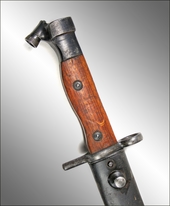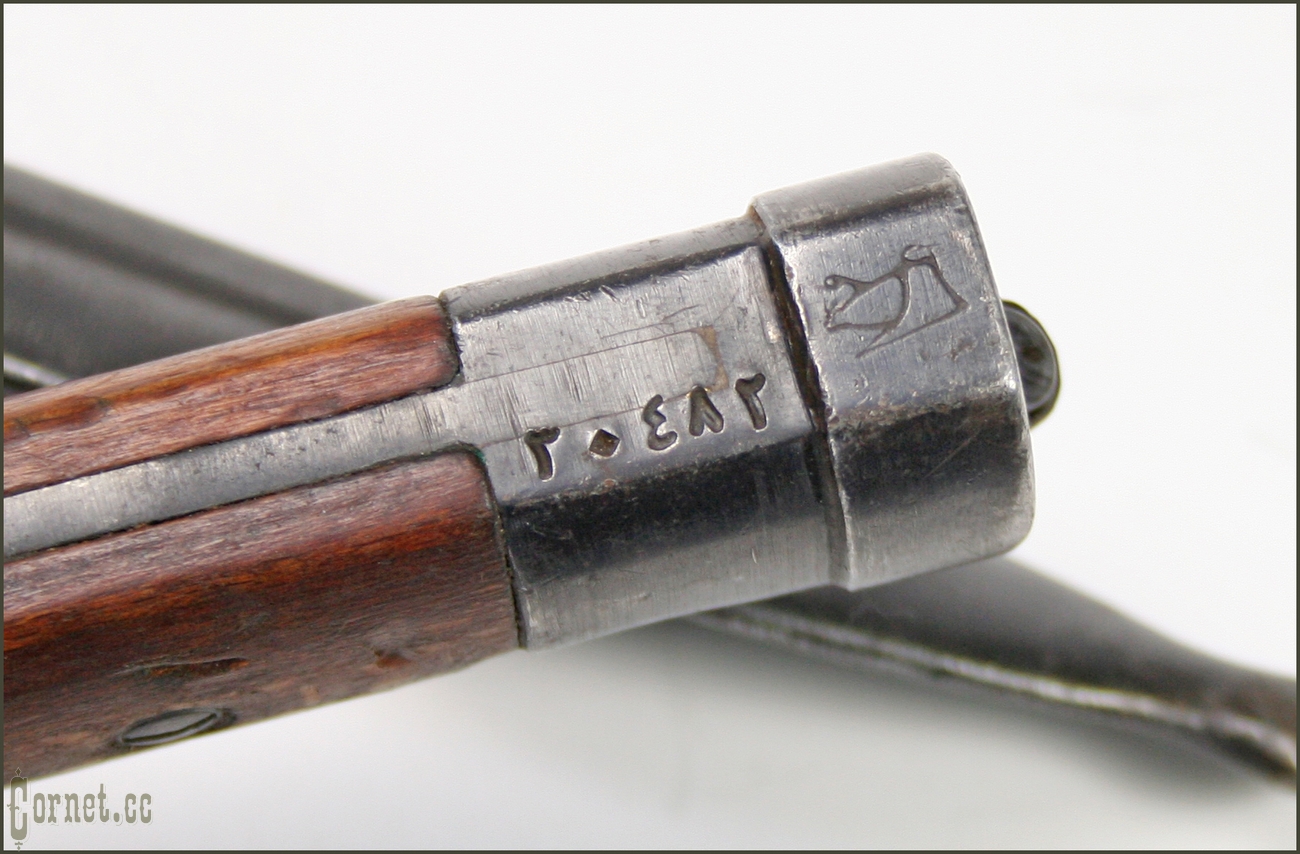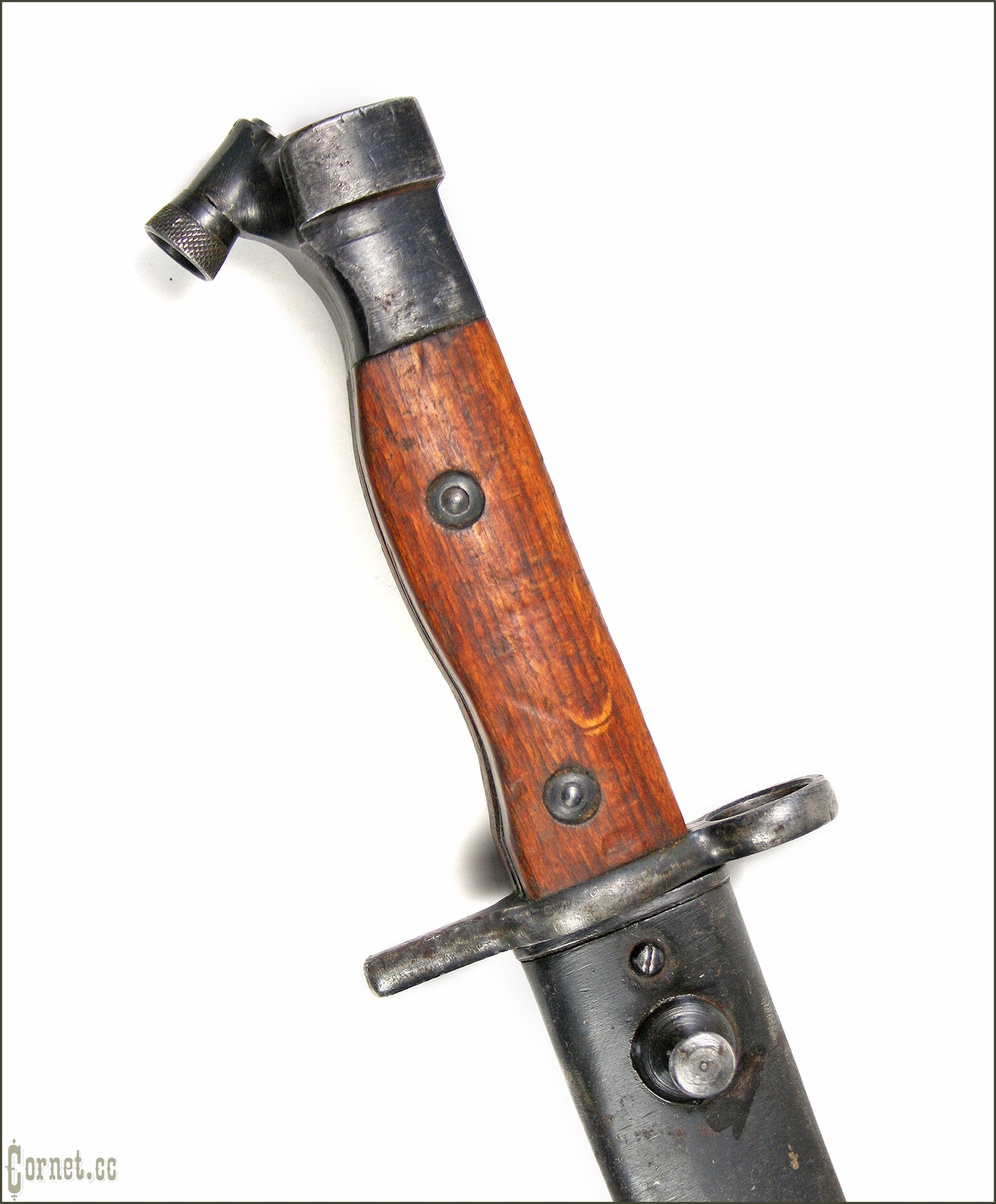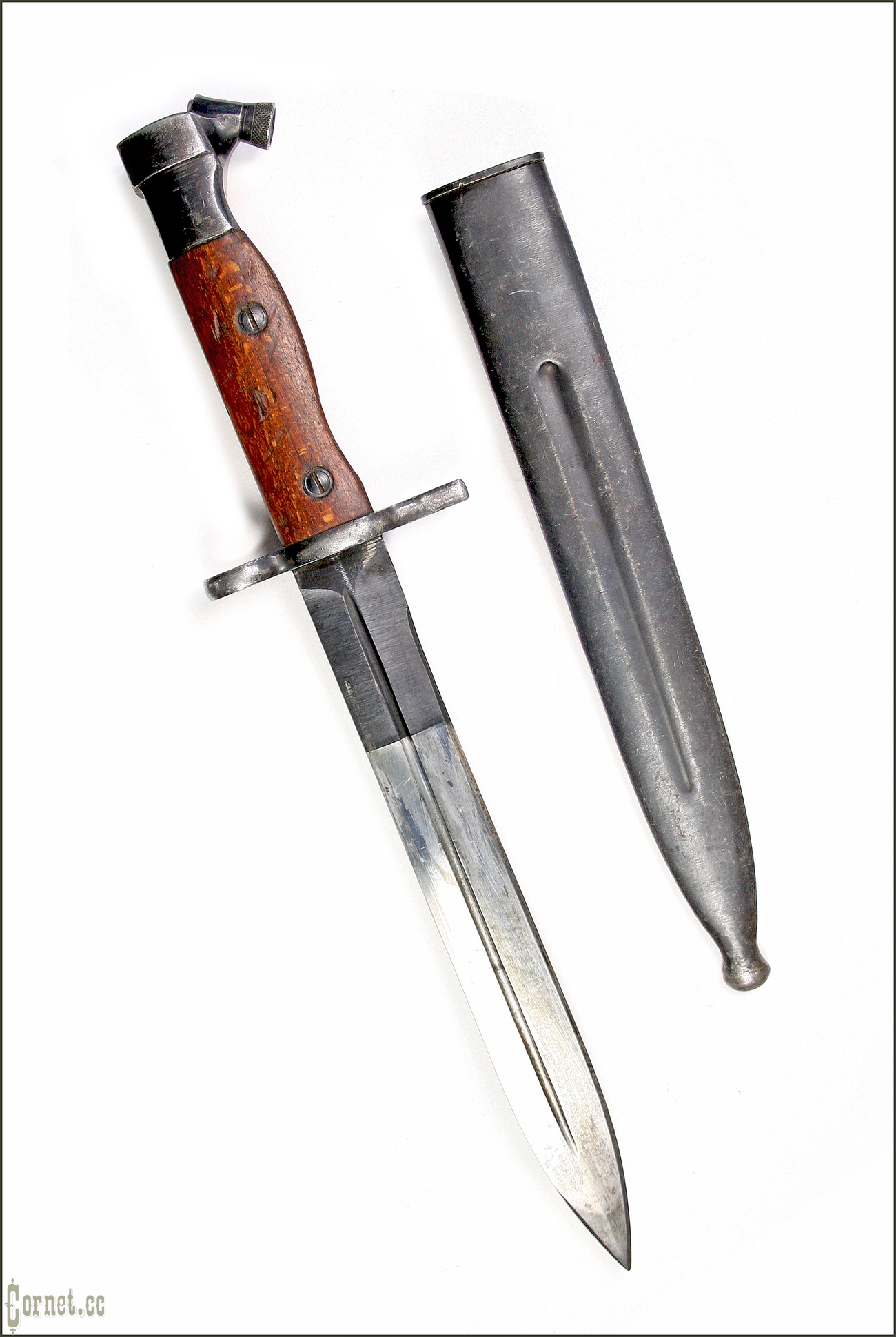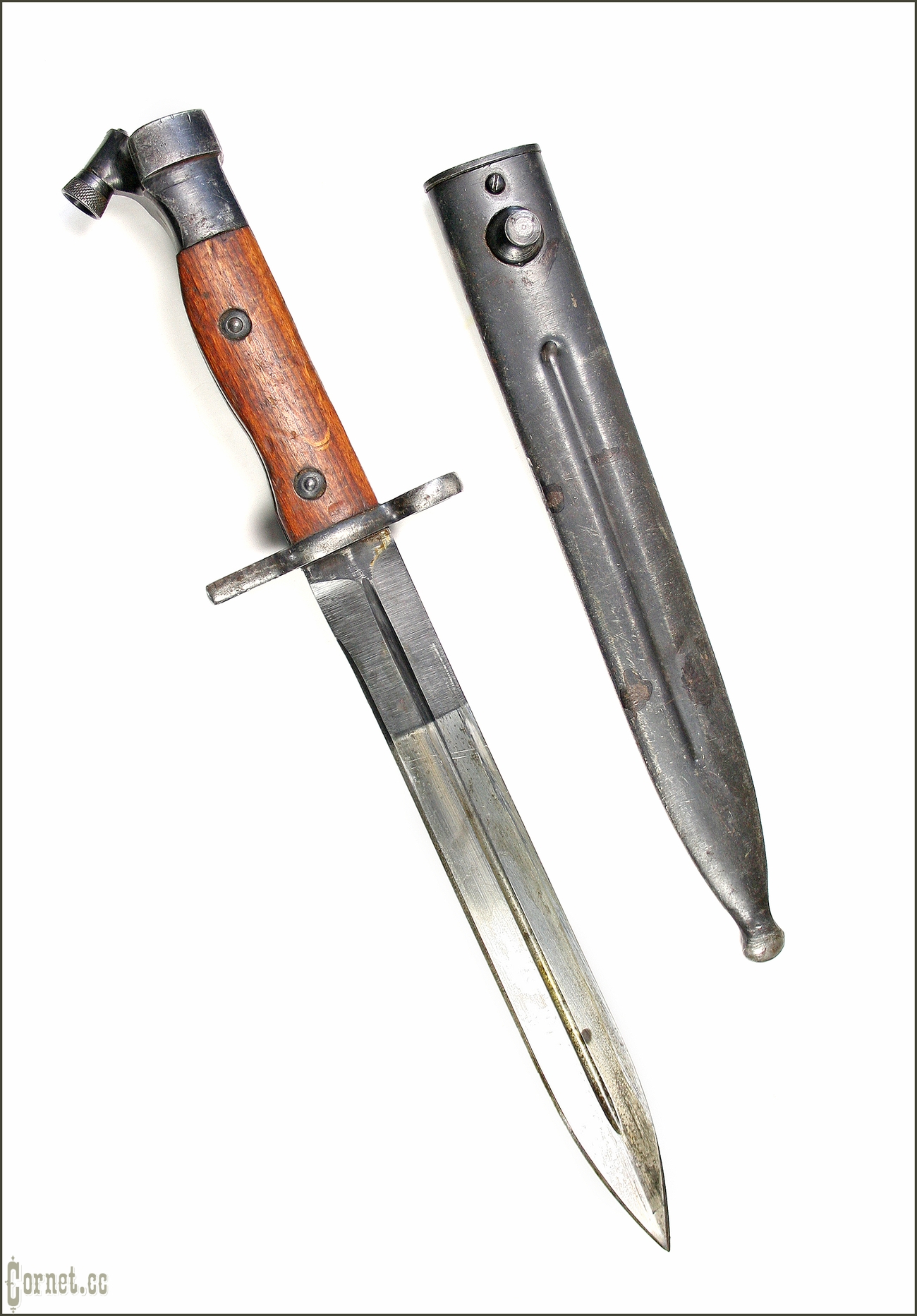№121558Bayonet-knife to the Hakeem semi-automatic rifle
Egypt. Bayonet-knife to the Hakeem semi-automatic rifle. The Hakim semi-automatic rifle is a copy of the Swedish Eklund system semi-automatic rifle (more often called the Ljungmann system, by the name of the developer company) of the 1942 model, made in caliber 7.92. The rifle was produced on equipment purchased in Sweden at the factory in Port Said. The bayonet to the semi-automatic Hakim rifle is also a copy of the Swedish bayonet of the 1896 model, used with the 1942 model Lyngman system semi-automatic rifle. From the prototype, the Egyptian bayonet differs in wooden cheeks of the handle, the shape of the cross and marking. In total, about 70,000 bayonet rifles were produced in Egypt in the 1950s and 1960s.
The bayonet blade is single-edged with a narrow lobe along the midline. The fighting end is double-edged. The handle is formed by two wooden cheeks fastened to the shank by two screws. A spring latch is located in the handle head, which fixes the bayonet when it abuts in the recess. Cross with trunk ring. Steel scabbards, with a round pin and a ball at the end.
The marking consists of a bayonet number and a stamp of acceptance in the form of a double crown of the pharaoh of Upper and Lower Egypt, located on the head of the handle and the mouth of the sheath.
The total length is 335 mm. Blade length 210 mm.
sold
